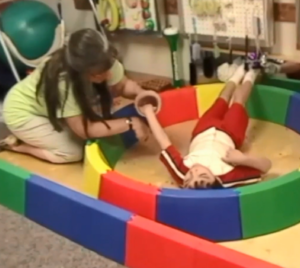Note to Administrators

To assist administrators and supervisors in their jobs of evaluating programming and educational staff implementing an Active Learning approach with a student(s) we have developed some tools to supplement the district’s or state’s process. We hope this helps you become more confident in evaluating these programs and the teachers working with the children who have such significant challenges. We believe that an Active Learning approach can be used with students of any age who are developmentally below the age of four. We also believe their programming can be made age-appropriate, teach academic and functional skills, and most importantly help these children to access learning guaranteed by IDEA.
Almost no one perceives that current teacher evaluation systems are working well. Even as the metrics in some states and districts have improved, most teachers still find themselves assessed in very distinct events once or twice a year. For teaching to be truly transformed, teachers need integrated and useful evaluation systems with results closely aligned to professional learning and ongoing development. Teachers and principals would contribute to designing and implementing equitable and transparent evaluation systems with multiple measurements of effectiveness. The evaluation systems we envision would include a range of summative and formative components, such as an analysis of teacher responsibilities and accomplishments, measurements of student growth data, results from formal observations, self-evaluations, and feedback from students and peers. These evaluations would be more meaningful and useful, informing decisions related to all aspects of advancement, including compensation, tenure and dismissal. Observations would be made by skilled evaluators who are knowledgeable about both content and pedagogy.
Section VII—Teacher Evaluation and Development
The RESPECT Project Vision Statement – U. S. Department of Education
One of the challenges administrators and supervisors face related to using an Active Learning approach is how to evaluate the effectiveness of the program and the staff who are charged with implementing this approach. Most administrators acknowledge that these children with the most significant developmental delays do not seem to make great strides in learning using educational strategies like their typically developing peers or even less significantly challenged peers experience. Many administrators are rightfully reluctant to support instructional strategies that they are unfamiliar with or don’t have extensive research-based results.
The big problem with these children who are developmentally under the age of four-years is that they do not learn like peers who are developmentally five years old, the age of children entering kindergarten. These children, because of their physical, sensory, cognitive, social and emotional challenges need educational strategies more often used with children in nursery or pre-school settings, even though they may be much older. So what does a program look like for a child who is 6-21 and functioning developmentally at an age below 4 years?
Nine Principles from NAEYC
National Association for the Education of Young Children’s guidelines and recommendations for developmentally appropriate practice are based on the following nine principles that we feel are reflected in Dr. Nielsen’s Active Learning approach. The nine principles include the following:
- Development and learning are dynamic processes that reflect the complex interplay between a child’s biological characteristics and the environment, each shaping the other as well as future patterns of growth.
- All domains of child development—physical development, cognitive development, social and emotional development, and linguistic development (including bilingual or multilingual development), as well as approaches to learning—are important; each domain both supports and is supported by the others.
- Play promotes joyful learning that fosters self-regulation, language, cognitive and social competencies as well as content knowledge across disciplines. Play is essential for all children, birth through age 8.
- Although general progressions of development and learning can be identified, variations due to cultural contexts, experiences, and individual differences must also be considered.
- Children are active learners from birth, constantly taking in and organizing information to create meaning through their relationships, their interactions with their environment, and their overall experiences.
- Children’s motivation to learn is increased when their learning environment fosters their sense of belonging, purpose, and agency. Curricula and teaching methods build on each child’s assets by connecting their experiences in the school or learning environment to their home and community settings.
- Children learn in an integrated fashion that cuts across academic disciplines or subject areas. Because the foundations of subject area knowledge are established in early childhood, educators need subject-area knowledge, an understanding of the learning progressions within each subject area, and pedagogical knowledge about teaching each subject area’s content effectively.
- Development and learning advance when children are challenged to achieve at a level just beyond their current mastery and when they have many opportunities to reflect on and practice newly acquired skills.
- Used responsibly and intentionally, technology and interactive media can be valuable tools for supporting children’s development and learning.
Principles of Child Development and Learning and Implications That Inform Practice
National Association for the Education of Young Children website
